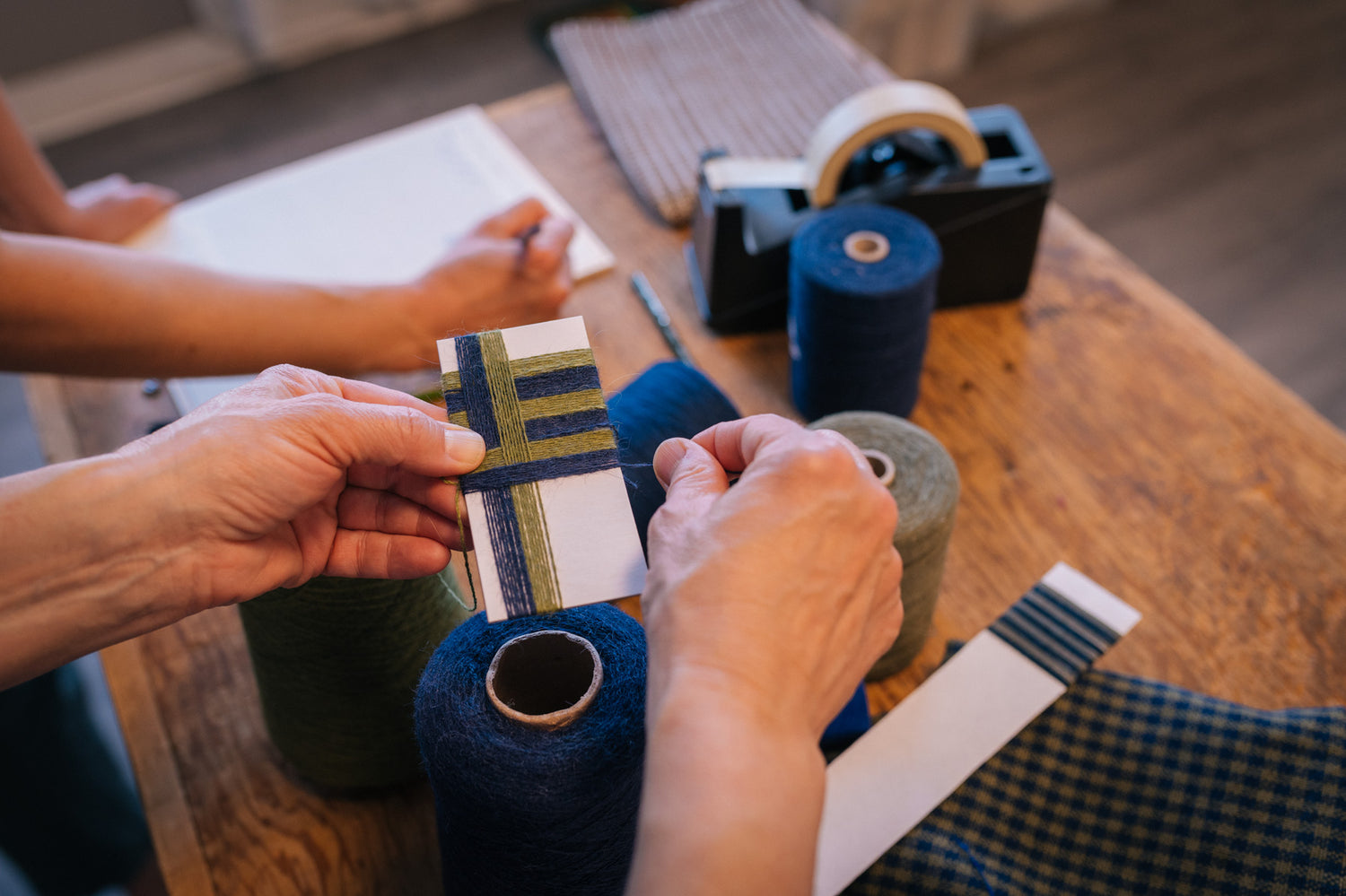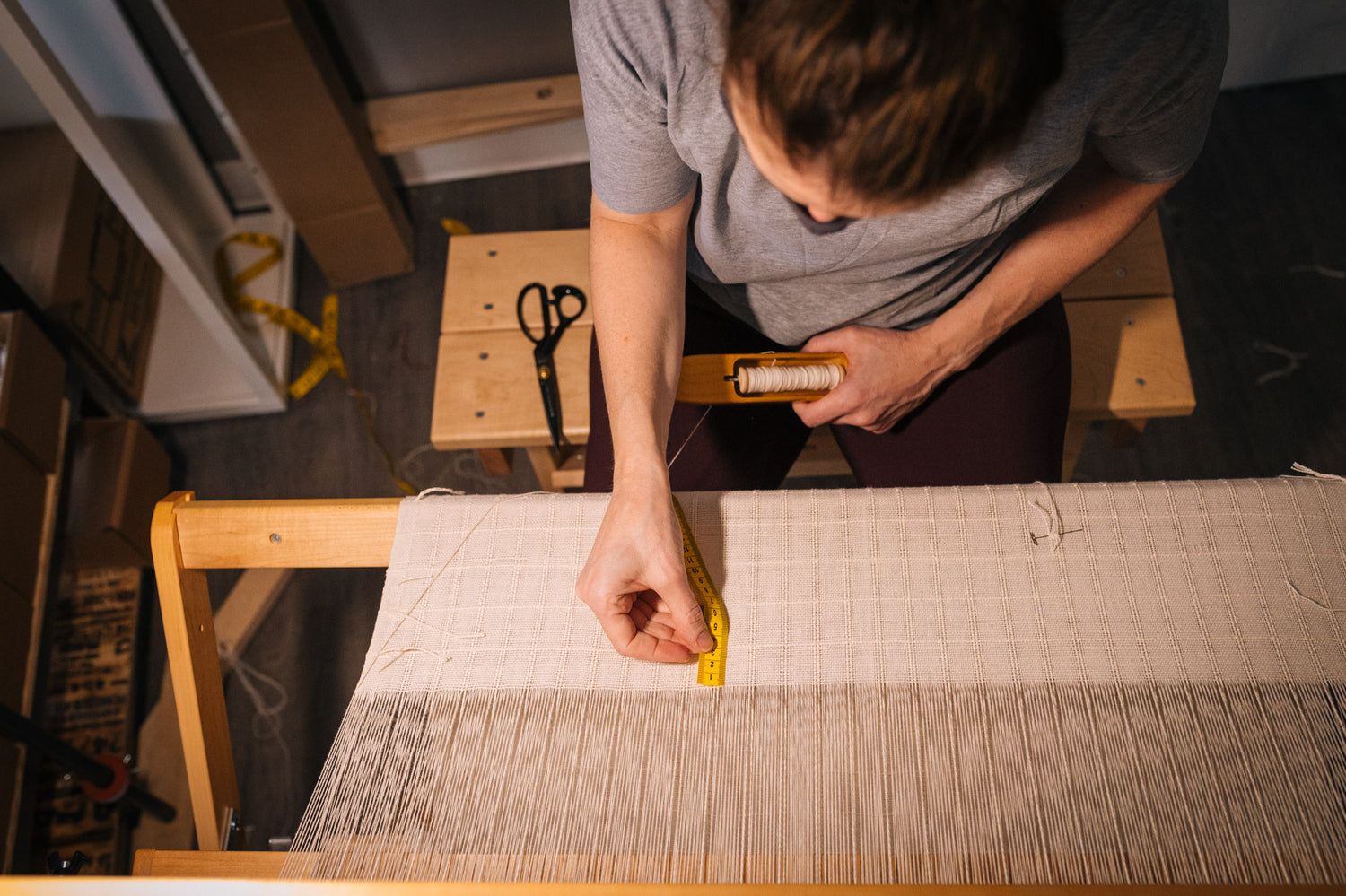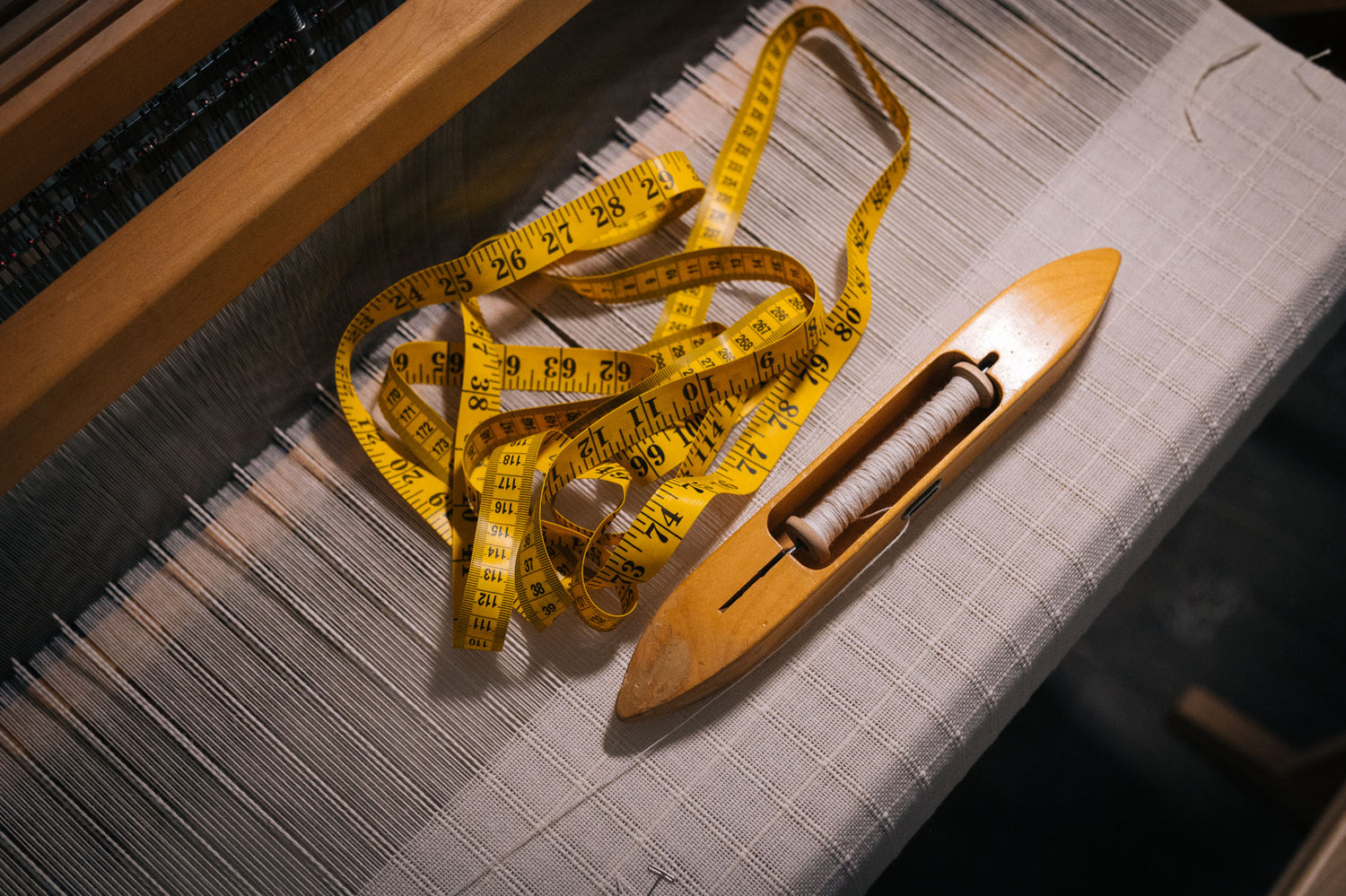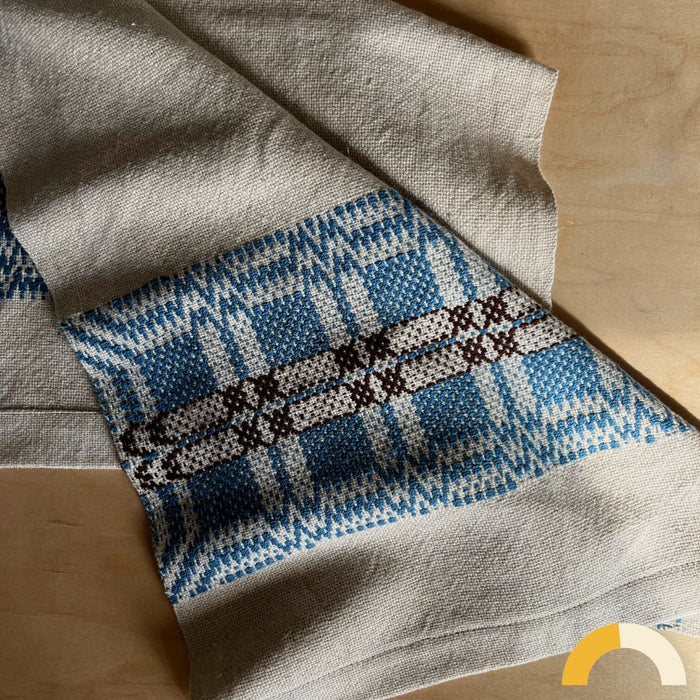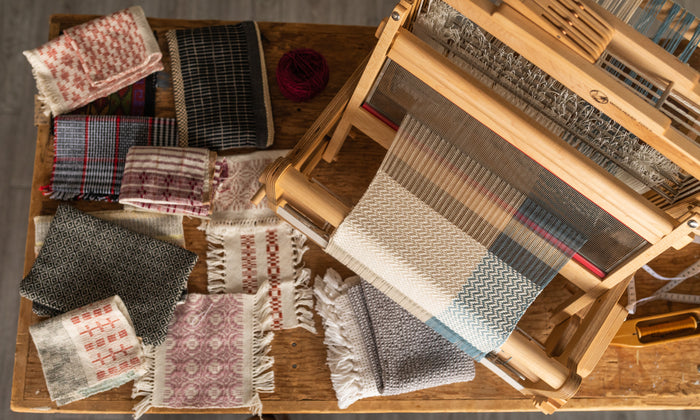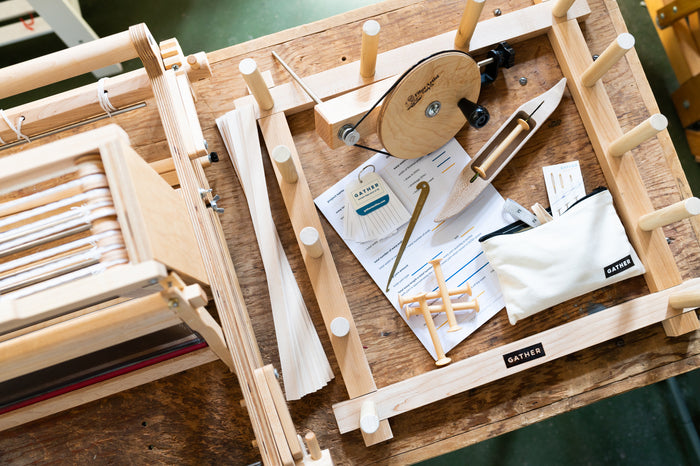“Sett” is one of those fabulous old-fashioned weaving words that might seem strange at first...
But refers to something pretty simple: how many strands of warp yarn there are in a single inch of weaving width. Because sett describes how many warp ends there are in an inch, it is commonly expressed using the term “ends per inch” or “epi” for short. A project with a sett of 20 epi, for example, has 20 warp ends in each inch of weaving while the project is on the loom.
Determining what sett a piece has is pretty easy: count the number of warp ends and divide by the number of inches in the width. Determining what sett a piece should have is a little more complex, and a key element in planning a successful project.
The Basics: Wraps per Inch
The simplest way to determine sett is to check wraps per inch. This is how many times you can comfortably wrap a yarn around a ruler (or our handy-dandy Sett Checker!) in one inch. When you are wrapping yarn, do not leave gaps between wraps, and do not wrap so closely that the yarn overlaps. Hold yarn with a firm and steady tension. Don’t hold it so tightly that you stretch it out and make it look skinnier than it is.
All done? Just count the wraps within one inch. Take that number and divide it in half for plain weave. If you are weaving twill, take two thirds of your wraps per inch instead. This is your standard sett. Here’s an example. Say you had a yarn that came out to 30 wraps per inch. You would use a sett of 15 epi for plain weave (30 x 0.5 = 15). For twill, you would use a closer sett of 20 epi (30 x 0.66 = 20).
More than one right answer
Wraps per inch give you a solid starting point. But for every material, there are multiple usable setts. Good sett comes in a range of possibilities, not in a single answer. Mercifully, other weavers are here to help you with this part. Gather’s Sett Chart shows ranges for many popular warp materials so that you don’t have to waste time (and yarn!) in trial-and-error experimentation.
Choosing a sett from the range of options is where you can get clever. Adjusting the sett changes the characteristics of your finished product. A close or dense sett makes stronger and stiffer cloth. A loose or open sett makes drapier, gauzier cloth.
Let’s look at 8/2 cotton for example. Gather’s Sett Chart lists a range of setts from 16-20 epi. If you’re planning tea towels, you will want to aim at the higher end of those scales for a close sett and hardy cloth--18 epi for plain weave or 20 epi for twill. On the other hand, if you’re aiming at a nice drapey scarf or gauzy window-covering, use the lower end of the range--16 for plain weave or 18 for twill.
In addition to thinking about the best sett for a particular piece, it can be helpful to think about the best sett for an overall warp. If you want the freedom to go back and forth between plain weave and twill on a long warp, choose a sett that is within the range for both structures.
Sampling for Sett
If you’re using an unusual weave structure or combination of different yarns, if you’re aiming at a very specific “hand” or feel in your finished product, or if you just love experimenting and discovering things for yourself, sampling for sett is a great idea.
Sett is determined by one of the last steps in dressing your loom: sleying the reed. The reed spaces out your warp threads, which translates directly into how many ends per inch your project has. To sample for sett, sley your reed at one sett, lash on, and weave your sample. Then cut your sample off, re-sley at a different sett, and weave the next piece. Repeat as many times as needed.
If you’re weaving on a rigid heddle loom, your options for sett are limited to which rigid heddle reeds you have on hand. But you can definitely thread a warp in a 10-dent reed, then cut it off and re-thread in a 12-dent reed. To keep threads from tangling during the switch, pull your threads out of the reed about 10 threads at a time and tie them in a slip knot.
Finally, remember that wet finishing will make many fibres bloom and pull together. To get a true sense of the impact of sett, be sure to wet finish all your samples in the same way you intend to finish your final piece.
Weft-Faced and Warp-Faced
The advice above, as well as most advice out there about sett, applies to more-or-less balanced weave structures. In a balanced piece, the number of warp ends per inch (epi) and the number of weft picks per inch (ppi) are the same.
There are, however, several styles of weaving that deliberately aim at an unbalanced result. Rug weaving has a much higher ppi than epi. It is weft-faced: the weft dominates the piece, and you can barely see the warp. On the opposite end of the spectrum, techniques like rep weave have much higher epi than ppi. Rep weaving produces warp-faced pieces commonly used for placemats. There are so many warp ends per inch that sometimes the weft is only visible where it peeks out at the selvedges.
Weft-faced pieces have a loose sett; warp-faced pieces have a dense sett. In both cases, the sett may fall well outside the range suggested for balanced weaves. If you are planning a project where you want primarily the weft or primarily the warp to be visible, make sure to seek out advice specific to your desired effect.
Thicker Weft? Thinner Weft?
A lot of advice about sett also assumes that weavers are using weft yarn that is about the same as their warp yarn. But what if you’re combining a thick weft and a thinner warp? Or a thin weft and a thicker warp?
Thick wefts with thinner warps tend to produce stiffer weaving. You can use sett to either enhance this effect, or to counteract it. A standard sett for your warp with a thicker weft will produce firm weaving, and a close sett will produce an even firmer product. For example, 8/2 cotton with a sett of 20 epi and an 8/4 cotton weft would make a sturdy table runner. If you want to use thicker weft but you’d like to counteract the stiffness it brings, loosen your sett. For example, 8/2 cotton with a sett of 16 and an 8/4 cotton weft would make a somewhat heavy but still drapey scarf.
The opposite holds true if you are working with weft that is thinner than the warp. Thin weft gives a project more drape. So an 8/2 warp with a thin 16/2 weft will be lighter and drapier at 20 epi than the exact same piece with 8/2 for the weft. You might want to err on the side of a tighter sett to make sure you have stable cloth if you are using a thin weft.
Lots to Explore
Like so much with weaving, sett is an area where you can get started with the basics fairly quickly, and then spend the rest of your life exploring and experimenting. If this all seems overwhelming, there’s no need to understand it--let alone weave it--all at once. Start by using wraps per inch, or by going with the middle of the range from the sett chart. From there, slowly move your way around the recommended range and see what results you like. The more you weave, the more sett will make sense. In the meanwhile, enjoy!

